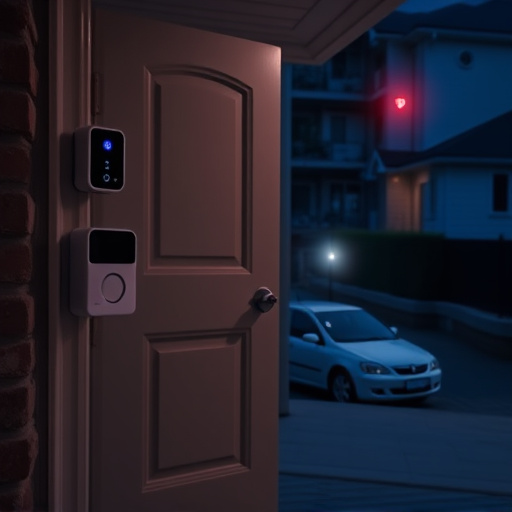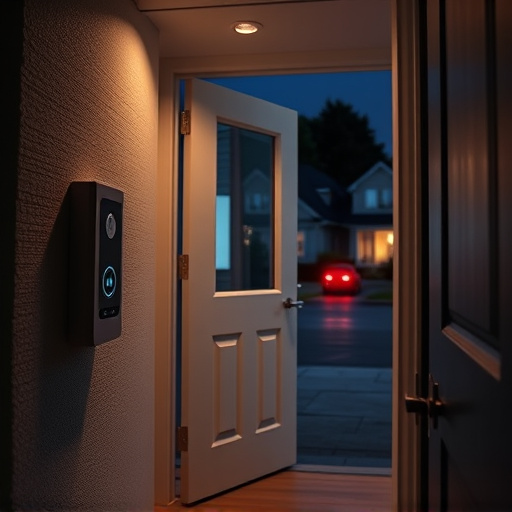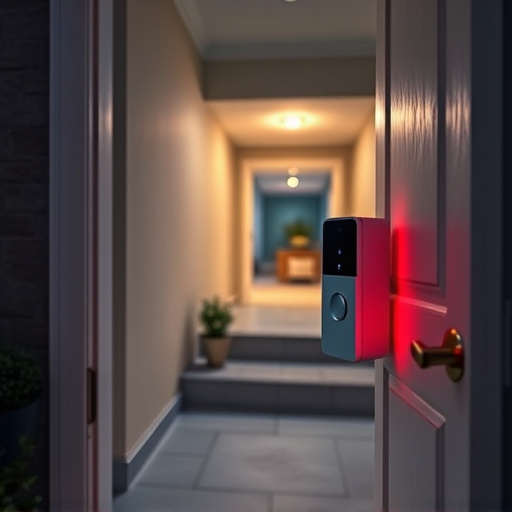Smart locks offer remote access, enhanced encryption, and convenience but require careful consideration. Weighing the benefits of smart locks, such as keyless entry and integration with other smart security devices, against potential risks like cybersecurity and battery life issues is vital during a smart lock evaluation. This process ensures an informed decision for improved home protection.
In today’s digital era, smart locks are transforming home security with their advanced features. This article delves into the world of smart locks, evaluating their benefits and potential as a significant home security investment. We explore various types, how they work, and their compatibility with existing systems. Key advantages like remote access, enhanced security through biometric authentication, encryption, and activity monitoring are examined, along with integration capabilities within smart home ecosystems. Additionally, we weigh the pros and cons, considering initial costs, privacy concerns, compatibility issues, and reliability to guide your decision.
- Understanding Smart Locks and Their Basic Functionality
- – Definition and types of smart locks
- – How smart locks work and their compatibility with existing systems
Understanding Smart Locks and Their Basic Functionality

Smart locks are an innovative addition to any home security system, offering a modern approach to traditional locking mechanisms. These digital devices allow users to secure their properties remotely, providing significant peace of mind and convenience. At its core, a smart lock is a sophisticated electronic device that replaces or enhances the functionality of a standard physical lock. It connects to a property’s network via Wi-Fi or Bluetooth, enabling users to manage access through mobile apps or voice commands.
When evaluating smart locks as a home security investment, it’s crucial to consider both their advantages and disadvantages. The benefits include enhanced convenience with keyless entry, remote monitoring capabilities, and improved security through encryption and access control. Smart locks also integrate seamlessly with other smart security devices, creating an interconnected network that bolsters overall home protection. However, potential drawbacks such as cybersecurity risks, higher costs compared to traditional locks, and battery life concerns should not be overlooked during the smart lock evaluation process.
– Definition and types of smart locks

Smart locks are a modern innovation in home security, offering advanced features beyond traditional mechanical locks. These electronic locking mechanisms can be controlled and monitored via smartphone apps or voice assistants, providing homeowners with unprecedented convenience and control over their properties. There are various types available, including Bluetooth, Wi-Fi, and Z-Wave enabled models, each with unique capabilities and compatibility with different smart home systems.
When evaluating the benefits of smart locks, it’s essential to consider both the advantages and potential drawbacks. As a home security investment, they offer increased convenience, allowing remote access and control over your doors. This is particularly useful for homeowners who often find themselves locked out or want to grant access to trusted individuals without providing physical keys. Moreover, smart locks can enhance privacy and deter unauthorized entry attempts with advanced encryption and access control features. However, concerns about data security and potential hacking risks must be addressed during the smart lock evaluation process, as these devices connect to home networks and store sensitive information.
– How smart locks work and their compatibility with existing systems

Smart locks are a cutting-edge home security investment that offers numerous benefits for homeowners looking to enhance their property’s protection. These innovative devices work by utilizing advanced technologies such as Bluetooth, Wi-Fi, or mobile apps to control and monitor access to your home. They can be integrated into existing smart home systems, allowing for seamless compatibility with other smart security devices like door sensors, cameras, and automation platforms. This interconnectedness enables a comprehensive security network, where all devices work in harmony to protect your residence.
When evaluating smart locks, it’s essential to consider both the advantages and potential drawbacks. Pros include enhanced convenience with keyless entry, remote access through mobile apps, and improved flexibility as users can grant or revoke access permissions for family members or guests. Additionally, smart locks often provide real-time alerts about lock activity, ensuring peace of mind. However, concerns about privacy, cybersecurity, and initial setup complexity should be addressed during the evaluation process to ensure a successful smart security implementation.






